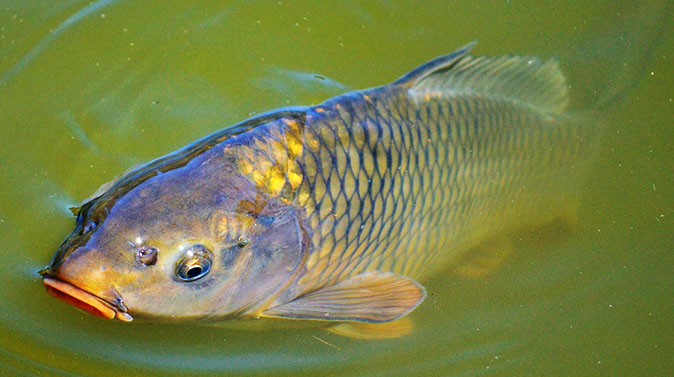Management
Aquaculture requires a lot of personal attention, unlike the industry.
Site selection

Before you start an aquaculture project fix your production target and species to be cultured. Assure the availability of water round the year, electricity, quality seed, feed, capital, and technology. Then adopt appropriate culture system. If you seek the help of a consultant, assure that he is basically qualified in fisheries, has experience in aquaculture systems, has own farm or has worked as farm manager, and that he has produced reasonable quantity of fish under his responsibility in the past.
Fish seed

Fish seed Select proper quality fish seed. In insensitive systems fish seed of 10 c.m. size is better and never stock below 5 c.m. size seed. For this purpose if larger fish seed is not available, a nursery pond may be set and small seed be kept there for a month till they grow to proper size. Visit the seed suppliers facility and see the seed before you purchase.
Water quality of Kerala is totally different from that of Andhra or Bengal. Ours is soft water and in other states it is hard water. Change of environment makes stress to the aquatic animal and creates disease and mortality. If possible get seed supply from our local hatcheries. If seed has to be brought from outside do proper quarantine and acclimatization. Out of the total mortality in a culture period, 75 % takes place during the first 3 days of stocking due to change of environment. If harvesting size is 500 gm. 3 fishes of 10 c.m. size are to be stocked for 1 Kg. production, considering mortality and under growth. So fix the production target and decide the number of fish seed to be stocked.
Selection of species

Catla , Rohu, Mrigal, Grass carp, Cyprinus etc. are good for extensive farming in larger ponds. Tilapia and Pangasius are the best for intensive aquaculture. Market value of Pangasius is less. Nutter/ red belly is acceptable for intensive production, but they may attack other fishes and destroy pond lining and submerged cables of aerators and pumps. Anabas is good but the always try to escape from the culture pond and market acceptability of Anabas in Kerala also is very poor.
Feed selection

Out of the total aquaculture expense 50 to 60 % goes for feed and feeding. The terrestrial animals get their energy from carbohydrate, while aquatic animals get their energy from protein. So they require protein rich food, that also animal protein is preferred. In an intensive culture system all the nutrition should come from artificial feed. So artificial feed should contain Protein, fat, energy, vitamins, minerals , trace elements, probiotocs etc. Most of the fishes in their early stage require 35 % to 45 % protein food and in the later stage (above 50 gm. size) 28 to 35 % protein containing feed. Feed acceptability, digestibility, attract ability etc. are also very important. Feed consumption and digestion is very much related to the dissolved oxygen content and other water quality parameters of water. If dissolved oxygen level in water is less do not give feed. Every 10 days observe the growth of the fish and control the feed accordingly.
Water quality parameters

Dissolved oxygen, Ammonia, Nitraite (NO2), Nitrate (NO3), total alkalinity, pH, temperature, visibility, algal bloom etc. are the major water quality parameters in aquaculture. These parameters should be checked and controlled regularly.
Marketing

Marketing is a point where many of the farmers fail to get good price. Unlike meat, fish gets the best taste and nutritive value when it is cooked within 4 hours of mortality. When given in live condition customers need not fear about any chemical preservatives or poisons like formalin etc. which is used for preserving fish during long transportation. In traditional marketing system like auctioning etc. the marketing expense is around 30% of the sale price.
Live fish marketing or transport is not very popular in India. But we can do it. For this purpose we have to have two marketing tanks of 12 m2 capacity with aeration, drainage and water supply at the farm gate. Nearly 250 kg. fish can be kept live in each of these tanks for one or two days. From this tank daily farm gate sale for retail customers can be done. Facilities for dressing the fish also has to be arranged. Seeing the fish in live and catching etc. is an interesting seen among ladies and children and that itself attracts the people to the farm.
Then fish can be transported live to a distance of around 50 km. in a 2 tone truck and foot path sale can be done at morning and evening. Social medias also used for marketing in various ways. Unlike Chicken even if the sale is delayed for a few months also there is no problem because the larger the fish the more will be the price. This is a market oriented production and not a production oriented marketing. As of today for Tilapia an average farm gate price of Rs. 250 to 275 per kg. can be anticipated when it is supplied in live fresh condition.
